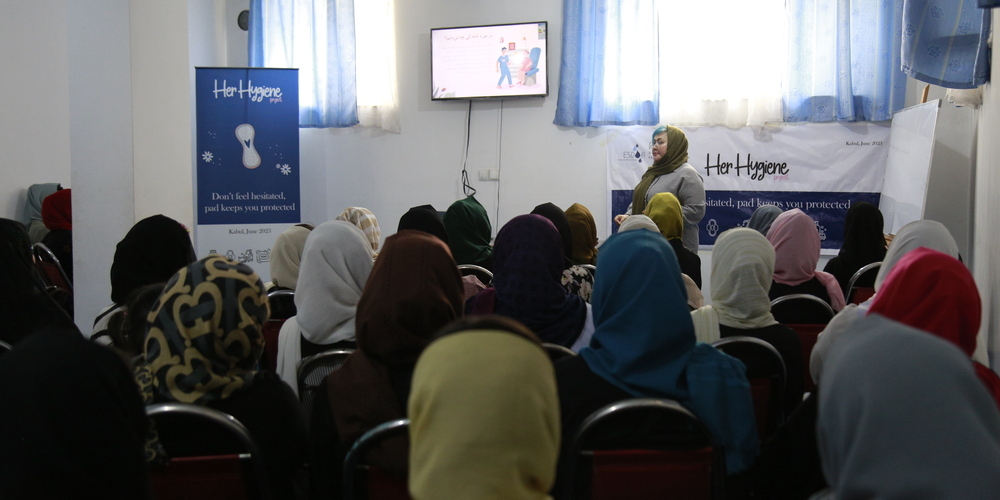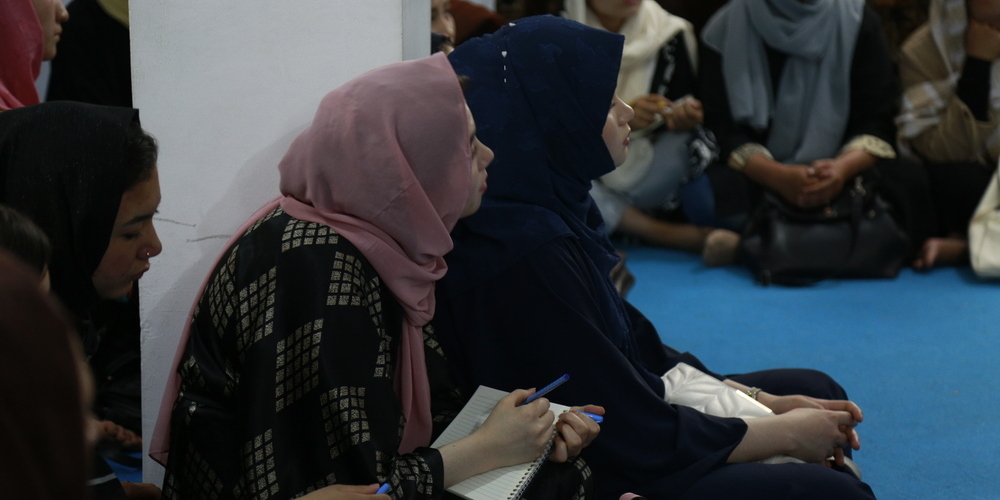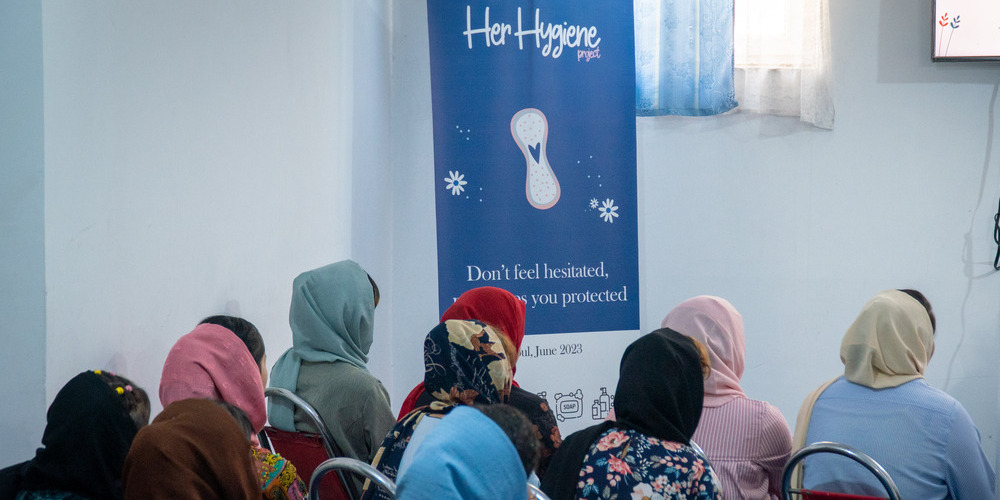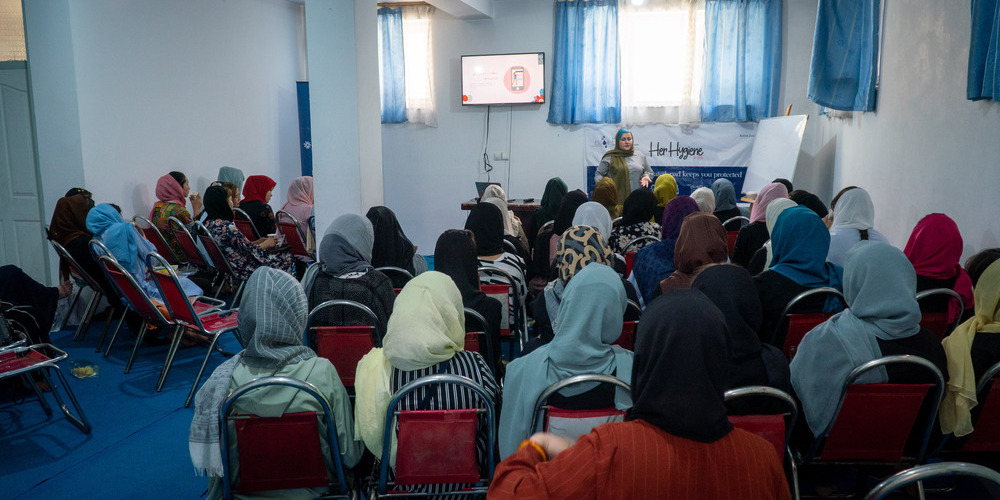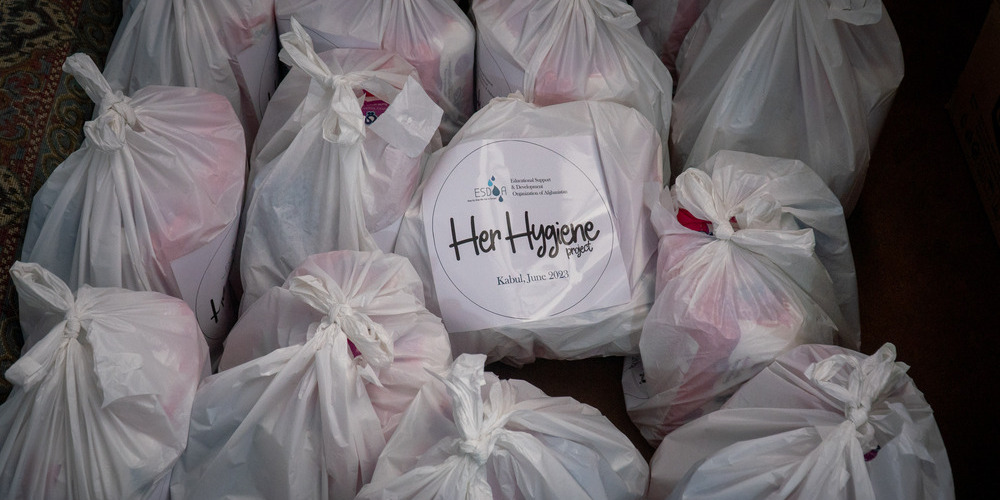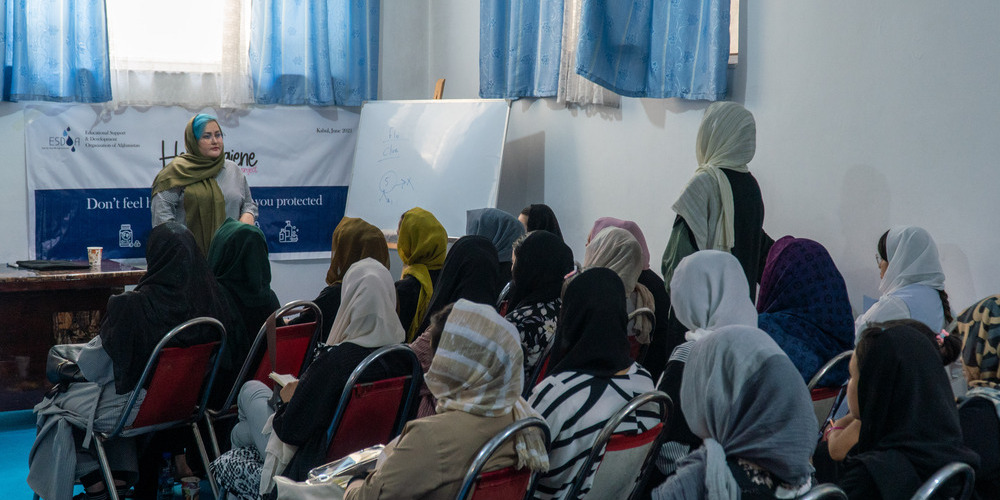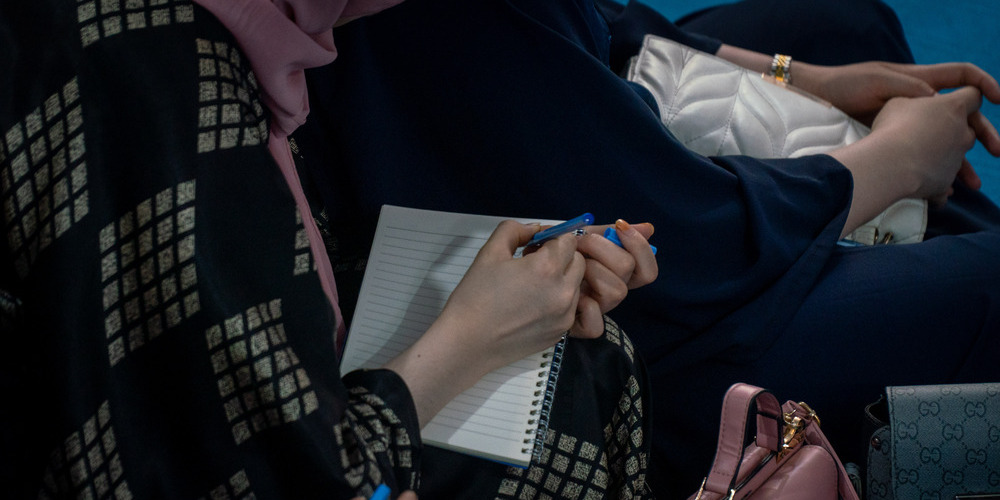Her Hygiene Project (2022-2023)
August 12, 2023
Approach and Methodology
After the Taliban takeover of Afghanistan, the most vulnerable group in the country is believed to be women and girls. Hence, the project aimed to provide enough opportunities for girls to their self-awareness, the period cycle (menstruation), and precautions from serious illness caused by lack of hygiene.
This project was executed over four three-month periods, with each period involving one month of implementation. In each period we targeted 50 women and girls who had been excluded from school and university, hailed from impoverished families, or were disabled.
To ensure compliance with the restrictions imposed by the Taliban government in Afghanistan, the training program was conducted in a secure and protected location.
The implementation phase of the project commenced with the recruitment of necessary personnel, procurement of health materials, preparation of educational resources, preparation of a safe venue for the training, and selection of participants followed by training day and preparation of the report.
Conclusion
In conclusion, the Her Hygiene Project was initiated to address critical issues that pose significant risks to the well-being and health of women in Afghanistan. The report by UNICEF in 2020 shed light on the alarming state of hand hygiene facilities in the country, revealing a lack of basic hand hygiene resources in the majority of households. This deficiency is particularly acute in rural areas and households with limited facilities.
Furthermore, the education system has suffered significantly, with women and girls being deprived of essential hygiene lessons following the Taliban’s rise to power in August 2021. The dire situation is further exacerbated by the scarcity of water and soap in schools, affecting millions of school-going children, of which a significant proportion are girls.
The prevailing instability in Afghanistan intensifies the challenges faced by vulnerable populations, particularly women. Women’s rights have been subject to fluctuations throughout the country’s history, resulting in limited access to education, healthcare, and employment. The disruption to women’s education and training may lead to a long-term shortage of female healthcare workers. Despite two decades of efforts, the recent political change threatens to impede progress in women’s healthcare countrywide.
Historically, reports on women’s healthcare in Afghanistan have predominantly focused on the barriers arising from the conflict. However, additional obstacles such as poverty, cultural norms, inadequate healthcare infrastructure, and lack of knowledge further hinder women’s access to healthcare services. With a significant portion of the population living below the poverty line, many women in the country continue to face challenges in obtaining essential healthcare. Overcoming each of these obstacles is crucial to improve healthcare outcomes for women.
Adolescents, constituting a considerable percentage of the population, encounter considerable challenges in fulfilling their sexual and reproductive health requirements. Afghanistan ranks poorly on the Gender Inequality Index, indicating substantial disparities in economic activity, women’s empowerment, and reproductive health. These disparities limit the potential of Afghan women and contribute to a high maternal mortality rate.
The project also aimed to highlight the discrimination and exclusion faced by women and girls in Afghanistan due to menstruation. The normalization of menstruation and the promotion of good menstrual hygiene practices were central objectives. Ensuring access to affordable menstrual hygiene products and proper sanitary facilities remains a serious concern. Cost, social norms, and limited availability hinder access to necessary equipment and supplies. Open and effective communication about menstruation is important, and conducting training sessions and public awareness programs can significantly increase women’s knowledge of feminine hygiene and emphasize its importance.
In Afghanistan, where female literacy rates are low, efforts to improve literacy and education are essential. Bridging the significant gender gap in literacy requires targeted initiatives to enhance female literacy rates.
The recent political developments, including the prohibition on female education and the closure of educational institutions, have further affected women and girls in Afghanistan. Harmful gender norms, child marriage, poverty, child labor, safety concerns, lack of female teachers, and inadequate school infrastructure continue to hinder women’s and girls’ education.
The Her Hygiene Project specifically targeted vulnerable women and girls who have been excluded from educational opportunities. By providing them with knowledge about women’s health issues, menstrual hygiene, and access to sanitary materials, the project aimed to empower these girls and mitigate the serious health risks associated with poor hygiene practices.
In conclusion, the Her Hygiene Project strived to address the multifaceted challenges faced by women in Afghanistan by raising awareness, promoting education, improving access to healthcare, and challenging harmful gender norms. By focusing on these critical objectives, the project aimed to contribute to the betterment of women’s lives and enhance their overall well-being and health in Afghanistan.

Get In Touch!
We appreciate your enthusiasm for helping us to provide services.
Please feel free to contact us in case needed.
We are always available to have your ideas on new projects, new opportunities and ingenious plans.
We are looking forward to hearing more from you.
info@esdoa.org
Address
Sherpoor, Shahr-e Naw, Kabul, Afghanistan



